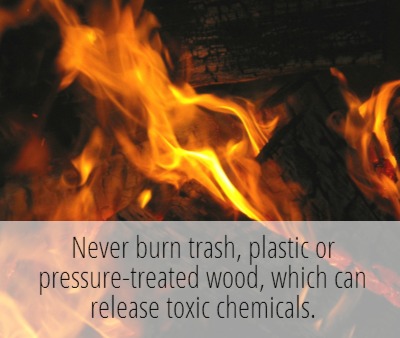This is the third installment in a seven-part Eco Tips Series. Go here to read previous installments.
According to Pittsburgh Today’s Regional Environment Survey, nearly 79 percent of regional residents believe there is little or nothing they can do to solve environmental problems. In light of this finding, Pittsburgh Today is producing this Eco Tips series, intended to show steps citizens can take to improve the environment. In today’s third installment, we focus on wood burning.
Our Environment Survey suggests that only 42 percent of southwestern Pennsylvanians favor placing greater restrictions on wood burning to reduce air pollution.
With that in mind, we offer a few tips endorsed by the U.S. Environmental Protection Agency to help you save some money and reduce pollution a bit when you light that fire.
Consider the following whether you burn outdoors or indoors in a fireplace or wood-burning appliance:
- Season your firewood: Split and store it for at least six months. Seasoned wood burns hotter. And the hotter the fire, the more efficient and less polluting it is.
- Burn hardwoods. They’re the most efficient.
- Never burn trash, plastic or pressure-treated wood, which can release toxic chemicals.
- Avoid using gasoline, kerosene or charcoal lighter when starting your fire. Only use newspaper or dry kindling.
- Don’t leave a dying fire to smolder. It produces little heat and more air pollution.
- Never burn during “ozone alert” days or any other time with air pollution is high. Check your local air quality forecast before you burn.
If you burn indoors:
- Clean ashes from your wood-burning appliance to avoid clogging air intake vents, which lowers efficiency.
- Keep a clean chimney to provide a good draft for more efficient burning.
- Consider upgrading to EPA-certified wood stoves and fireplace inserts, which burn cleaner, more efficiently and emit less particle pollution than older models.
More information on best burn practices, recommended wood-burning appliances and related topics is available on the web at EPA.gov.
This is the third installment in a seven-part Eco Tips Series. Go here to read previous installments.





